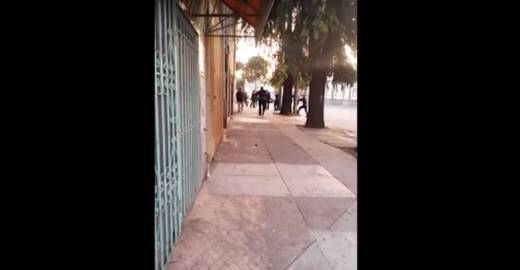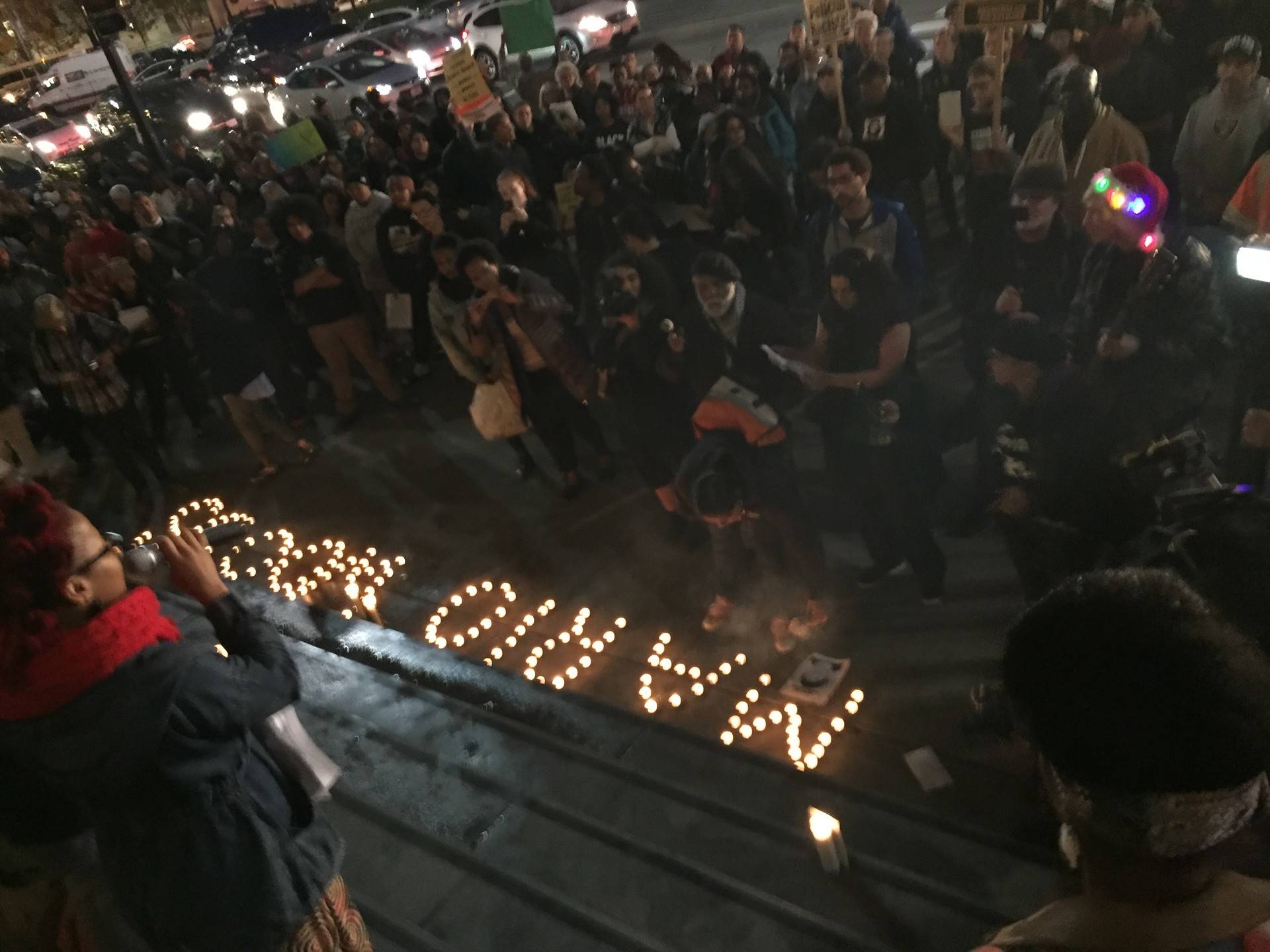The newly unsealed video provides perhaps the clearest view of the moment that August as well as officers Nicholas Cuevas, Winson Seto, Antonio Santos and Scott Phillips started to fire.
It appears to show more space between August and Woods at the moment gunshots are heard, compared to videos from other perspectives.
And, according to attorneys representing Woods' mother, Gwendolyn Woods, it shows Woods start to move away from August just before he's shot.
The video appears to definitively disprove statements then Police Chief Greg Suhr made days after the shooting: that Woods raised a knife toward August before the officers fired.
But neither Suhr nor anyone else investigating the shooting were aware of the bus driver's video until more than a year later. The driver said in deposition testimony that he feared repercussions and kept the video to himself until the summer of 2017, when he provided a copy to the city.
The city attorney's office waited as long as it could to turn the video over to plaintiffs' attorneys, according to depositions in the case, because the Muni operator who recorded the shooting wanted to change jobs and no longer drive a bus in the Bayview district before his footage became public.
Orrick dismissed parts of the lawsuit that relied on federal law, citing the relatively recent U.S. Supreme Court's decision in Kisela v. Hughes — a seminal case that expanded police officers' legal immunity when confronting suspects carrying knives.
But the judge ruled a jury should have the final say on state-law based negligence and wrongful death claims.
"Viewing the evidence in the light most favorable to the plaintiff, a jury could conclude that officers should have attempted more alternatives before shooting Woods," Orrick wrote.
"Unique to this case, there were well over a dozen officers on scene, with at least nine in the direct vicinity of Woods. Each officer had multiple additional weapons, including wooden batons. Given Woods's size, 5'9" and 156 pounds, a reasonable jury could find that police could and should have overpowered him rather than killing him," the judge wrote.
The city had sought a ruling that would find the shooting a reasonable, legally justified use of force before the case ever made it to trial.
"Videos show that officers significantly outnumbered Woods, who had neither brandished the knife nor made verbal threats, but rather made statements a fact finder could infer were suicidal," Orrick wrote.
"A jury could find that Woods was injured and moving slowly at the moment officers shot him. These facts could be sufficient to allow a jury to conclude that by escalating to deadly force in such a situation, officers acted with reckless disregard for Woods' rights," the judge wrote.
Orrick noted the city's arguments that could show the officers' use of force "was tied to legitimate concerns about the safety of officers and bystanders."
"This is a question properly resolved by a jury," he wrote.
The trial is scheduled for April 1, 2019.
Editor's note: The video below contains profanity and graphic violence. It may be disturbing to watch.

